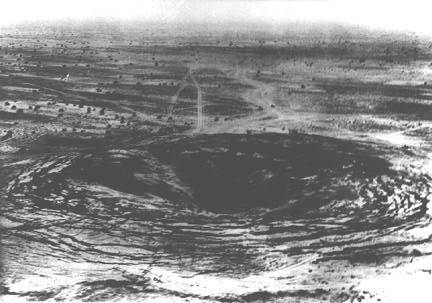SHOULD INDIA CONTINUE NUCLEAR WEAPON PROGRAMS?
By
Varun Alwani
Product Manager, Ucertify, Allahabad
As early as June 26, 1946, Pandit Jawaharlal Nehru, soon to be India's first Prime Minister, announced:
“ As long as the world is constituted as it is, every country will
have to devise and use the latest devices for its protection. I
have no doubt India will develop her scientific researches
and I hope Indian scientists will use the atomic force for
constructive purposes. But if India is threatened, she will
inevitably try to defend herself by all means at her
disposal.”
|
 |
India's first Nuclear test occurred on 18 May 1974. Since then India conducted another series of test at the Pokhran test range in the state of Rajasthan in 1998. India has an extensive civil and military nuclear program, which includes at least 10 nuclear reactors, uranium mining and milling sites, heavy water production facilities, a uranium enrichment plant, fuel fabrication facilities, and extensive nuclear research capabilities.
First underground nuclear explosion at Pokhran in Rajasthan on May 18, 1974.
It is widely estimated that India currently owns approximately 200 warheads. It is known that about 75% of its warheads are assembled and the rest are in a sub-assembled state, and the number is expected to grow in time. In 1945 the Americans nuked Japan. Since then in some parts of the world nuclear weapons became much desirable for national security. Subsequently, during the Cold War era these weapons did succeed in bringing stability. In the Indian context these weapons have remained at the core of its national security debate.
Why India Needs Nuclear Weapons?
It is a reality that many Indians, most significantly the so called academic community and strategic thinkers view the world with a western perspective. Since western theorists and intellectuals view nuclear weapons as an ultimate personification of deterrence so do their Indian followers. The concept of deterrence or prevention of conflict in contrast to defense that implies actual conflict, emerged in 1950s and 1960s when the world woke up to the fact of radiation damage caused by nuclear weapons and the super powers weapon stockpiles reached the level where there was 500 ton of TNT explosive per living human being on this planet.
In the nuclear era it was believed that failure of deterrence meant nuclear war, a war that would always be catastrophic. But deterrence or nuclear deterrence is not omnipotent as even during the Cold War era, when it worked, proxy conflicts between the two superpowers continued; be it in Korea, Vietnam or in Afghanistan. Thus nuclear deterrence is issue specific; it prevents a direct nuclear war between adversaries and possibly a direct conventional war at best.
Another reason for India supporting Nuclear weapon is the perilous security environment in South Asia, as India had limited options as a non-nuclear weapon state. On one hand it has to deal with the lurking challenges from China's nuclear arsenal and on the other Pakistan's nascent weapons program. By preventing Nuclear Weapons, India lies at the disposal of Pakistan, China and other nuclear weapons states for not making nuclear attack on it. The long history of conflict along with close proximity with these countries indicates the importance and need of such weapons for India.
However, the following words of Jawaharlal Nehru come alive in the context of nuclear weapons- “The policy of being too cautious is the greatest risk of all.” . Though not yet faced by India, it is a well known fact that nuclear experiments involve a number of risks. The testing or detonation of nuclear weapons release radioactive materials, remain in the ecosystem for thousands of years. Consuming radioactive contaminated water for a long period of time is closely related to high cancer rates. Nuclear radiation, which results from the neutrons and gamma rays associated with fission, is lethal in high doses. It has many hazardous effects, like increased cancer rates and organ damage. In addition to the 200,000 estimated deaths from the Hiroshima and Nagasaki bombs, thousands of other civilians developed cancer and other diseases form the high levels of radiation.
Thousands of warheads remain on high-alert; once launched, cannot be recalled and as such there have been over 20 recorded instances of false alarms, which were narrowly avoided. In addition to the risk posed by and for the US and Russia, those with the biggest arsenals, an even greater risk applies in India and Pakistan, whose unhealthy relationships makes it even more likely that a false alarm lead to an accidental launch. Space-based missile defense interceptors, such as those proposed by the US, can increase the risk of accidental detonation by eliminating pace-based early warning satellites, being used by both the US and Russia.
Another threat is “dirty bomb”. A “dirty bomb” is a device containing radioactive material and conventional explosives, such as dynamite. When the device explodes, neither fusion nor fission occurs, though it will spread the radioactive material, contaminating the surrounding area. Radiological terrorism has occurred twice, in 1995 and 1998, both in Russia.
From the very start of the nuclear age, India was a vociferous proponent of a nuclear test ban. To wit, in 1954, India initiated a global call at the U.N. Disarmament Commission for an end to nuclear testing and a freeze on fissile material production. Likewise, in 1978 and 1982 at the Special Sessions on Disarmament, India proposed measures for banning nuclear testing, and in 1988, it introduced the Rajiv Gandhi Action Plan for the Total Elimination of Nuclear Weapons. However, by signing Nuclear Non-Proliferation Treaty (NPT), India now has the right to possess nuclear weapons, and plays a major role in maintaining world peace.




